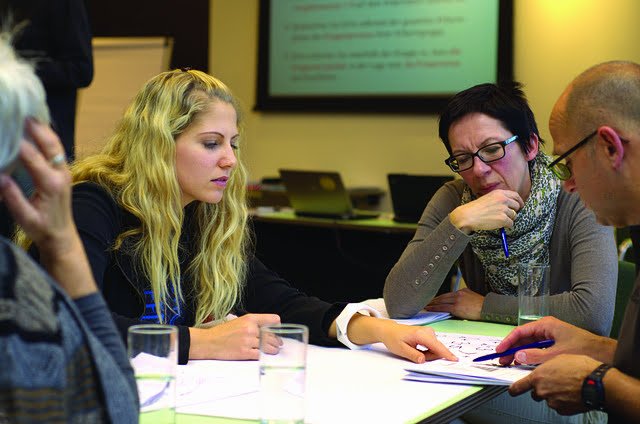
Consulting Lifecycle
Table of Contents
Consulting Lifecycle
As a consultant, navigating the consulting lifecycle effectively is crucial for delivering successful projects and building strong client relationships. Here’s a detailed guide on what to do during each phase, including explanations, examples, and standard terms:

1. Initiation Phase: Setting the Foundation [ Consulting Lifecycle ]
Objective: To establish a clear project scope, define deliverables, and align stakeholders.
Why It’s Needed: The initiation phase is critical because it sets the stage for the entire project. It ensures everyone understands the project’s goals, objectives, and boundaries, minimizing misunderstandings and scope creep.
Activities:
-
Stakeholder Alignment: Identify and engage all relevant stakeholders, including clients, employees, and external partners.
-
Problem Definition: Clearly articulate the problem or opportunity the consulting project aims to address.
-
Ethical Contracting: Develop a contract outlining terms of engagement, confidentiality agreements, and intellectual property rights.
Tools & Documentation:
-
Statement of Work (SOW): A detailed document outlining the project scope, stakeholders, schedule, deliverables, legal terms, and costs. Why: It serves as the blueprint for the project, ensuring all parties are clear on what is expected.
-
Project Charter: A concise document that defines the project goals, objectives, success criteria, and key stakeholders. Why: It provides a high-level overview and is a reference point throughout the project.
-
Stakeholder Map: A visual representation of stakeholder roles, interests, and influence levels. Why: It helps identify who needs to be involved and how to manage their expectations effectively.
Output: A well-defined project framework that includes the SOW, Project Charter, and Stakeholder Map.
Example: A retail company hires a consultant to improve customer satisfaction. During initiation, the consultant meets with store managers and customer service teams to align on goals and define the problem statement (e.g., reducing customer complaints by 20%).

2. Diagnosis Phase: Understanding the Client’s Situation [ Consulting Lifecycle ]
Objective: To gather comprehensive data to diagnose the client’s challenges and identify opportunities for improvement.
Why It’s Needed: The diagnosis phase is essential for uncovering the root causes of the client’s issues. It helps consultants move beyond surface-level symptoms to develop targeted and practical solutions.
Activities:
-
Data Collection: Use qualitative (interviews, focus groups) and quantitative (surveys, financial metrics) methods.
-
Root-Cause Analysis: Apply tools like the Fishbone Diagram or 5 Whys to identify underlying causes.
Tools & Documentation:
-
Data Analysis Software: Tools like Excel, SPSS, or R for data analysis. Why: They enable consultants to analyze large datasets efficiently and identify trends and patterns.
-
Fishbone Diagram Template: A visual tool to identify and categorize potential causes of a problem. Why: It helps teams systematically brainstorm and analyze the root causes.
-
5 Whys Worksheet: A simple yet powerful technique for drilling down to the root cause by asking “why” repeatedly. Why: It uncovers the underlying issues that may not be immediately apparent.
Output: A detailed diagnostic report that includes data analysis, root-cause identification, and preliminary findings.
Example: A manufacturing firm experiences high defect rates. The consultant collects data on production processes and uses the Fishbone Diagram to identify causes (e.g., inadequate training, poor quality materials).

3. Action Planning Phase: Designing Solutions [ Consulting Lifecycle ]
Objective: To develop and prioritize solutions based on the diagnostic findings and align them with the client’s goals.
Why It’s Needed: The action planning phase ensures that the solutions are innovative, effective, feasible, and aligned with the client’s strategic objectives.
Activities:
-
Solution Design: Employ methodologies like Design Thinking or SCAMPER to create innovative solutions.
-
Prioritization: Use matrices like the Eisenhower Matrix to prioritize solutions based on urgency and importance.
Tools & Documentation:
-
Design Thinking Workshops: Facilitate collaborative sessions to generate and refine solutions. Why: They involve stakeholders in the creative process, ensuring user-centered and practical solutions.
-
Prioritization Matrix Template: A visual tool to evaluate and prioritize solutions based on cost, impact, and feasibility. Why: It helps make informed decisions about which solutions to implement first.
-
Solution Design Document is a detailed document outlining the proposed solutions, rationale, and expected outcomes. Why: It provides a comprehensive overview of the proposed actions and their potential impact.
Output: A comprehensive action plan that includes detailed solution designs, prioritized actions, and implementation timelines.
Example: A tech startup uses Design Thinking to redesign its user interface, focusing on user experience and feedback. The solutions are then prioritized using a cost-benefit analysis matrix.

4. Implementation Phase: Executing the Plan [ Consulting Lifecycle ]
Objective: To implement the designed solutions effectively while managing change and tracking progress.
Why It’s Needed: The implementation phase turns strategic plans into actionable results. It requires careful change management and continuous monitoring to ensure effective and sustainable solutions.
Activities:
-
PDSA Cycles: Test solutions in small-scale pilots using the Plan-Do-Study-Act cycle.
-
Change Management: Apply frameworks like Kotter’s 8 Steps to manage organizational change.
-
KPI Tracking: Monitor key performance indicators to measure progress and identify areas for adjustment.
Tools & Documentation:
-
PDSA Cycle Template: A structured template to document each cycle’s plan, execution, study, and act phases. Why: It ensures that the implementation is iterative and data-driven.
-
Kotter’s 8 Steps Checklist: This checklist ensures that each step in Kotter’s change management model is addressed. Why: It provides a structured approach to managing organizational change effectively.
-
KPI Dashboard: A visual tool to track and visualize performance metrics in real-time. Why: It enables consultants and clients to monitor progress and make informed decisions.
Output: Implemented solutions by monitoring progress and managing change processes.
Example: A hospital implements a new patient flow system using PDSA cycles. They track KPIs like wait times and patient satisfaction and adjust the system based on feedback.

5. Closure Phase: Review and Knowledge Transfer
Objective: To evaluate the project’s success, transfer knowledge to the client, and document lessons learned for future engagements.
Why It’s Needed: The closure phase ensures the project achieves its objectives, the client can sustain the improvements, and the consulting team can learn from the experience.
Activities:
-
Post-Project Evaluation: Assess project outcomes against initial objectives.
-
Knowledge Transfer: Ensure the client can maintain improvements by transferring skills and knowledge.
-
Lessons Learned: Document insights and best practices for future projects.
Tools & Documentation:
-
Final Report Template: A comprehensive document summarizing project outcomes, recommendations, and achievements. Why: It provides a formal record of the project’s impact.
-
Knowledge Transfer Plan: A detailed plan outlining training sessions, documentation, and ongoing support needed for the client. Why: It ensures the client can continue to benefit from the project’s outcomes.
-
Lessons Learned Document: A repository of insights, best practices, and areas for improvement for future engagements. Why: It enables the consulting team to improve their processes and effectiveness continuously.
Output: A final report, a knowledge transfer plan, and a lessons-learned document to ensure project success and future improvements.
Example: After completing a project to improve supply chain efficiency, the consultant conducts a final review with the client. They document lessons learned, such as the importance of early stakeholder engagement and the need for flexible project timelines.
By following this comprehensive guide, consultants can ensure that each phase of the consulting lifecycle is executed effectively, leading to successful project outcomes and strong client relationships.

More Stories
- Tornado Strikes Murcia, Alijis | Negros Power Restoration Efforts
- Negros Power and BFP Unite for a Greener Future
- MORE Power Transformation for Iloilo City
- EastWest Bank Expands Premium Services in the Visayas with New Bacolod Priority Center
- Customer Journey Mapping | A Guide
- Negros Power’s Two-Day Rehabilitation: A Commitment to Reliability
- Original Nena’s Beth Chicken Barbecue at The Market Place, NCG | A Review
- BEST OF THE BESTS: Top Colorful Festivals in the Philippines
- ILOILO CITY TOURIST SPOTS AND THINGS TO DO
- 15 TOP HEALTHY FRUITS IN THE PHILIPPINES



